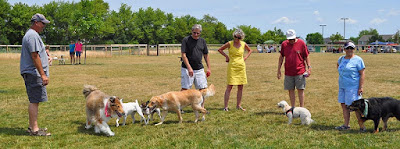Puppies are fragile animals that need extra love and attention until they can grow into their full adult bodies. When a puppy becomes sick you may be confused as what to do to ensure that the puppy recovers fully. There are a few practices you can take to help your puppy heal and feel better about themselves throughout the entire sickness. Follow the advice outlined here so that you can rest assured that your puppy will be fine and that he or she will recover in a short amount of time.
First of all it is important to keep the puppy warm, especially during the colder months out of the year. Consider purchasing an extra blanket or two for the puppy's bed so that they can snuggle comfortably in between the sheets. Secondly, keep your home warm to allow your puppy a comfortable area to inhabit. Always make sure your puppy has plenty of food and water so that they can remain properly nourished to help combat their sickness. All of these things are important towards helping your puppy remain comfortable and healthy.
Have you taken your puppy to the veterinarian? Depending on the severity of the sickness, you may want to take your puppy to get checked by a veterinarian. He or she may be able to prescribe some medication for your puppy to take so that he or she can heal quicker. No matter what you do it is important to help make your puppy feel loved, especially if they just moved into your home not too long ago. Pet your puppy and give it genuine love to let he or she know they are accepted in your household, that way the puppy feels confident about its living situation.
One last thing you should always do in your home is clean it thoroughly. Remove as much dirt, dust, and grime from your home as possible. Avoid creating an atmosphere where the puppy can breathe in a lot of dust and other particles, this is not healthy for the puppy. Try your best to clean your home as frequently as possible not only for your puppy's health, but for your health as well. Also, clean your kitchen and bathroom thoroughly to remove the possibility of mold from accumulating throughout your home. Mold is toxic and can harm you, your puppy, and anyone else living in your home. Maintain a clean home and take care of your pet and they will be back to normal in no time.
Source:http://ezinearticles.com/?What-You-Need-To-Do-If-Your-Puppy-Gets-Sick&id=8841659



















































